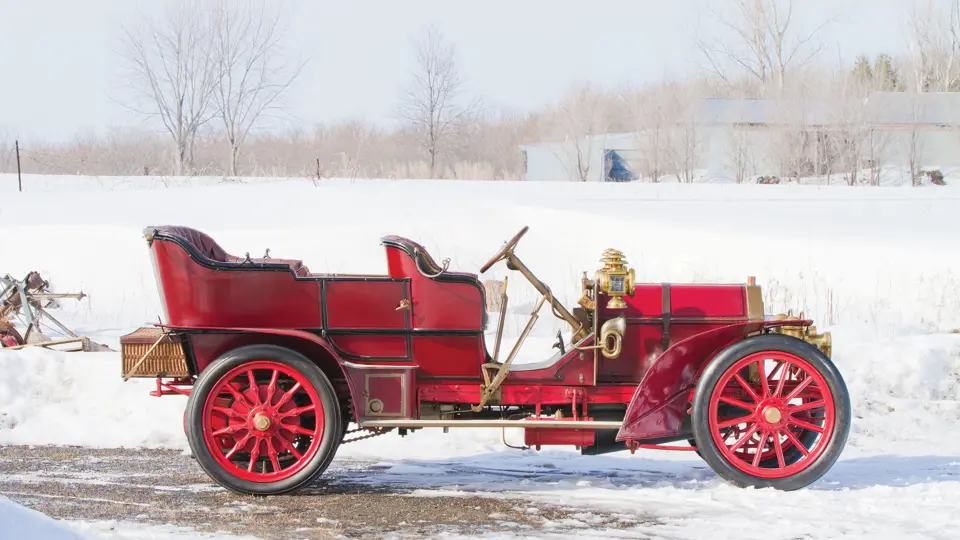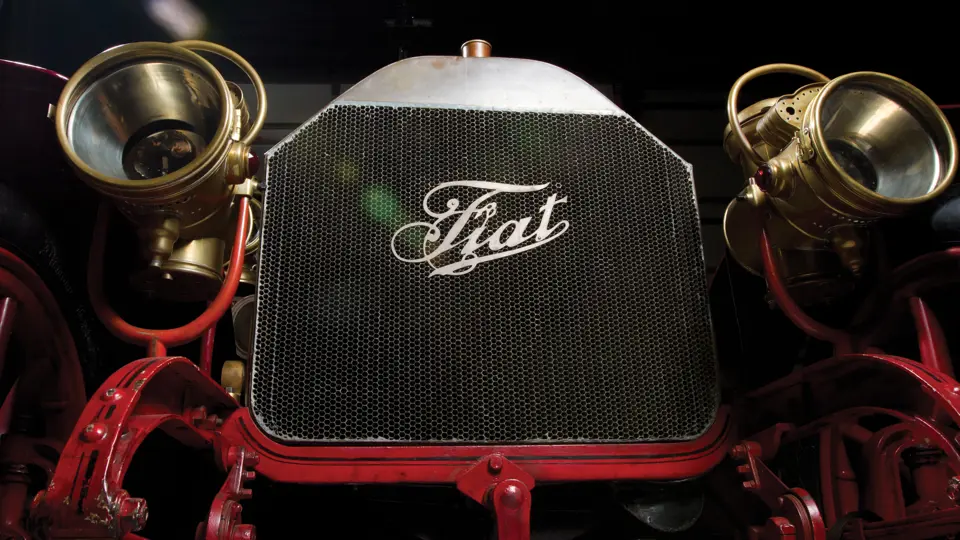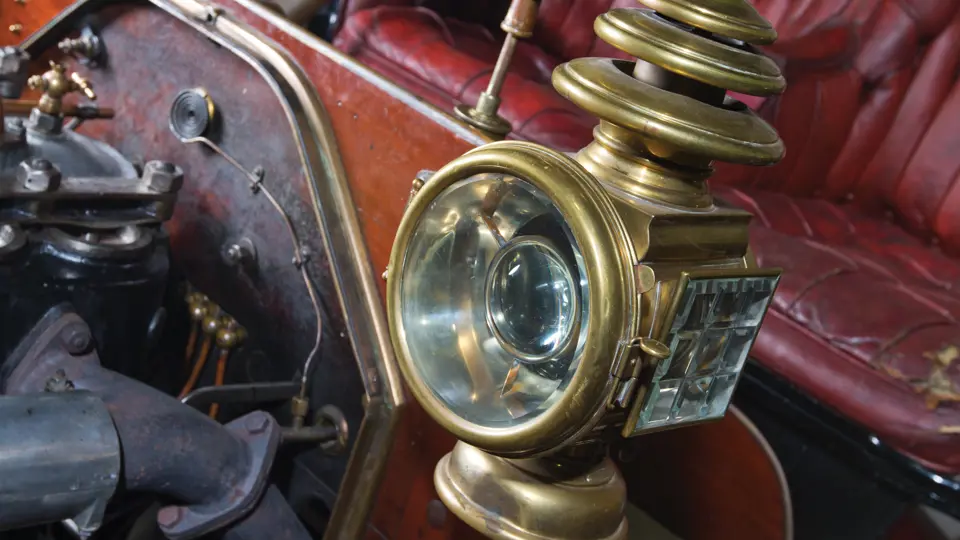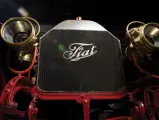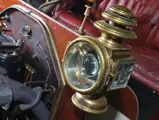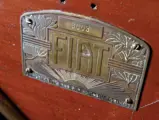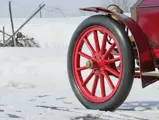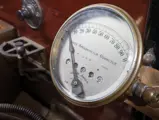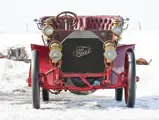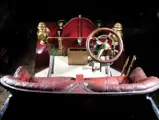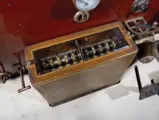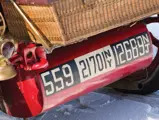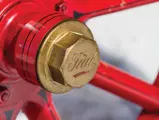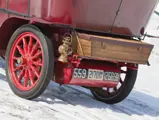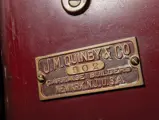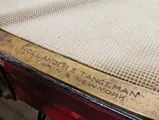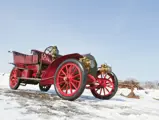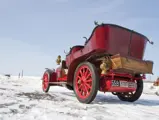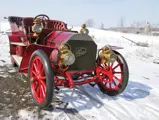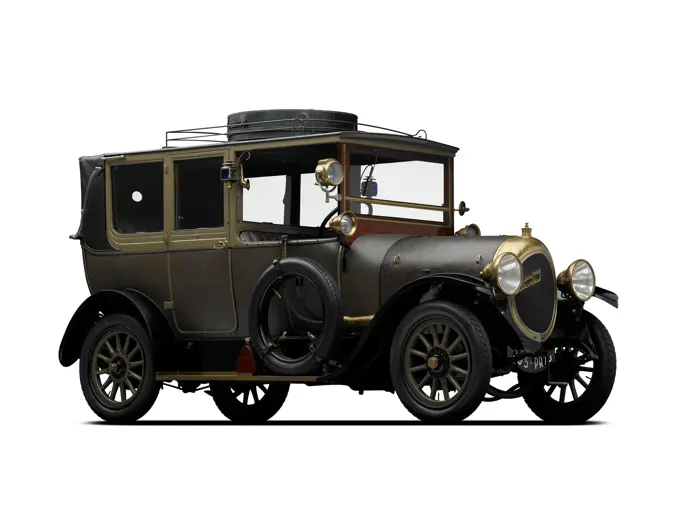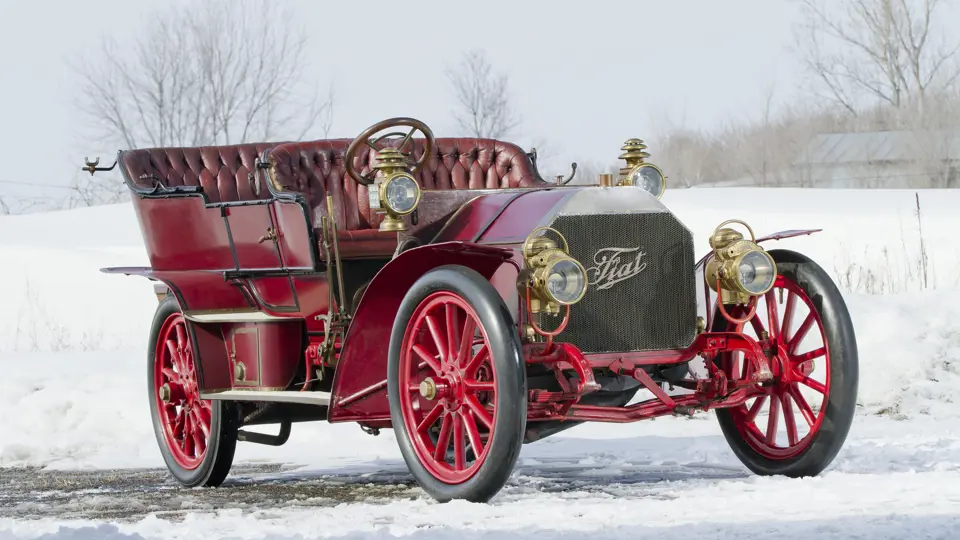
1905 FIAT 60 HP Five-Passenger Touring by Quinby & Co.
{{lr.item.text}}
€1,400,000 - €1,600,000 EUR | Not Sold
{{bidding.lot.reserveStatusFormatted}}
- “The original supercar”
- The sole survivor of 20 examples built
- Completely original and unrestored
- Known ownership history from new, including A.A. Busch Jr., James Melton, Don Miller, and Louis Biondi
60 hp, 10.61-litre (647 cu. in.) T-head four with cylinders cast in pairs, four-speed manual transmission with dual-chain drive, pedal-operated dual driveshaft brakes, and handbrake-operated two-wheel rear mechanical drum brakes. Wheelbase: 2,985 mm (117.5 in.)
Survival numbers of the earliest generation of truly lavish dual-purpose supercars, both in percentage and absolute terms, are miniscule. One would be hard-pressed to justify any other single surviving car's ability to better match the distinction of the 60HP FIAT, in its various forms, as the world's first cost-no-object road going supercar for supremacy on both public roads and the fastest racing circuits. Chassis 3003, this 1905 FIAT 60HP Quinby Five-Passenger Touring, is certainly among the very best survivors of an era when FIAT advertised its products as “The Aristocrat of Auto Cars”.
Believed the lone survivor of 20 similar examples produced, the originality and uniqueness of 3003 make it even more singular among a group of early survivors that are regarded by automotive historians as faster, more technically interesting, and far rarer than the handful of remaining 60HP Mercedes, which have long been considered the Holy Grail of early high-horsepower cars.
The story of FIAT’s racing exploits is exceptional, and, suffice to say, many volumes could be filled documenting the many races in which FIAT entries emerged victorious, not to mention the personal anecdotes about the many legendary drivers who piloted the cars. In 1904, the firm commenced a program to create the ultimate road car by matching its racing chassis with the torquey, extremely reliable 60-horsepower version of its four-cylinder race engine. For 1905, the program took a quantum leap over the 1904 model with the introduction of a new steel chassis, which replaced the wooden chassis employed the previous year. The new platform employed a 5/8-inch thick aluminium scuttle and belly pan to support and protect a 10.6-litre T-head four, which boasted a bore and stroke of 145x160 millimetres. The powerplant also featured a next-generation make-andbreak ignition with automatic advance, and engine cooling was ensured by a honeycomb radiator, made under licence to the same specification as those installed in the contemporary Mercedes. The axles were made of nickel-steel, and all cast parts were hand-filed smooth; even the crankcase was perfectly scraped. The advanced oiling system delivered consistent lubrication to engine parts under all loads, far exceeding the capabilities of the approach taken by Mercedes and most contemporary American performance cars.
Each of the 20 road going chassis built by the end of production in 1905 carried a price tag of $13,500. Ordering and taking delivery of one of the first two 60HP examples was Kaiser Wilhelm II, of Germany. The Kaiser quickly suggested to his friend, August Anheuser Busch Sr., that the American-based brewery magnate should also buy one. In 1904, Busch placed his order with Manhattan-based Hollander & Tangeman, the sole FIAT agents in the United States. According to Registro Storico Fiat, chassis 3003, the third example produced, was posted to Hollander & Tangeman on 7 June 1905. There were 2.985- and 3.335-metre chassis available; chassis 3003 was delivered in the short-chassis configuration, and interestingly, it was fitted with 100HP-type racing sprockets. Further, the four-speed transmission features a unique clutch arrangement that has not been found on any other surviving examples of the marque.
The rolling chassis was then shipped to luxury coachbuilder Quinby & Co. in Newark, New Jersey. Quinby recently patented a new type of body construction, which was applied to FIAT chassis number 3003 and featured an all-aluminium skin. Using the highest-quality material available, the Quinby craftsmen affixed the panels to the wood frame and then used brass mouldings to eliminate evidence of seams. No panel fasteners were visible, as all were affixed from inside the cabin and then covered by hand with silver solder. It was an amazingly labour-intensive process, which justified the $4,000 price of the five-passenger touring body.
Justified by the dual-purpose road/race nature of the vehicle, Quinby designed the wings to be easily removed from the body. Even with the wings attached, however, the aluminium-intensive FIAT 60HP weighed in at just 2,700 pounds, which gave it a powerto-weight ratio better than its famed Mercedes 60 racing rival.
Chassis 3003 spent the first 30 years of its life in the possession of Busch, until his death in 1934. In 1935, the car began a stay with a trio of noted collectors from Connecticut, who would keep it in the same small radius for the next 73 years. First it went to James Melton, who purchased the car from the Busch Estate. After six years, he sold it to Dr Don Miller. Reportedly, Dr Miller would occasionally start the car for spectators, but he rarely drove it. In 1973, he passed it to Louis Biondi, of Connecticut, in whose estate it remained until 2012. Were it not for the thoughtful care of the car by these notable enthusiasts, it is very possible that the FIAT could have been lost, or its integrity impaired by well-meaning restorers.
As acquired by the current owners, it was apparent that this vehicle had been seldom used since new, but it was always treated by each previous owner like a prized asset. All the parts, which were originally numbered 3003 by the factory, remained; the exhaustive list includes the chassis, engine, transmission, steering, suspension, rear sprockets, chains, radiator, cooling fan, belly pan, and even securing fasteners. An initial assessment quickly identified two non-factory parts that had been fitted to the car: an incorrect carburettor and a non-factory magneto, but both original parts came with the purchase from the Biondi Estate, making the FIAT entirely numbers-matching. The car also features an exhaust cut out, which, although not original to the car, is correct and accentuates the thunderous exhaust note.
Similarly, the Quinby body, number 502, still retained all of its original numbered panels, wood framing, leather seats, mohair floor mats, brass lighting, some of the weather equipment, and over 85 per cent of the original 108-year-old paint. Dr Miller had repainted a section of frame rail to match, applied small touch-up paint, and had new wheels made to address a lack of availability of original specification-sized tyres at the time. The car retains some original weather equipment, including mounts for a dust shield, and the original wicker basket was still affixed to the rear, right above the car's three 1905-issued license plates from New York and New Jersey, a pointed reminder of the days when there was no interstate reciprocity. As a testament to both FIAT and Quinby's abilities to source aluminium of considerably higher quality than any of the other early adopters, there are no stress cracks to any of the century-plus-old mechanical or body components.
The FIAT was entrusted to the rural Wisconsin shop of George Ktsanes, a noted expert mechanic and restorer of classic Bugattis, Mercedes, and Brass Era cars. Ktsanes set out to sympathetically preserve the FIAT and its 108-year-old patina, yet also return it to running order. He carefully inspected all elements and confirmed factory originality, and then he attended to every part of the car, carefully cleaning and addressing issues stemming from its long hibernation. He refurbished the original carburettor and magneto to perfect operation, and then he refit them to the car.
Ktsanes also established that the confusing design of the unique clutch, combined with the fitted incorrect replacement magneto, were probably the sources of poor running, causing the car to be removed from road use early in its life. Being a traditional, low-tension, two-flux variety magneto running at crank speed, rather than the original's special required four-flux cam speed, was causing the engine to misfire on every other stroke. With the proper parts rebuilt and installed, it now starts easily with the hand crank, and it idles nicely at a comically lazy 70 rpms.
After tuning the car and properly adjusting the clutch, Ktsanes reached speeds in excess of 55 mph without even reaching minimum rpms required to engage fourth gear. Period publications confirmed by modern calculations indicate that top speed could exceed 80 mph. To bring the FIAT back to a stop, the brake pedal operates two driveshaft brakes, which reportedly function very well for the era; a handbrake controls mechanical units on the rear wheels. The 100HP-type sprockets and chains allow so much power to be delivered to the wheels that in gear, at idle, each compression stroke causes the rear wheels to spin 10 degrees on any surface!
The car was one of the features of the 2012 Pebble Beach Concours, which celebrated Fiat. Judged as part of the Preservation Class, it was awarded a Second in Class, placing it behind a DV32 Stutz that earned additional points from participating in the Tour d’Elegance. At the concours, 3003 was also honoured with the Meguiar’s Award. In September 2012, 3003 received the FIVA Award, in recognition of its outstanding originality, at the Kirkland Concours, and it was subsequently featured in the main entrance of the LeMay Museum.
There are only a small handful of pure examples of early, high-horsepower cars from the dawn of the automotive age. Due to their performance on the road and the race track, the FIATs are among the most highly sought-after examples, and they simply not change hands publicly, or at all, with any regularity. This car’s potential acquisition should be considered a great source of pride for any collector, whether it remains on European shores or returns to its home of almost 11 decades in North America.
Please consult an RM specialist for additional information regarding FIAT’s racing history.
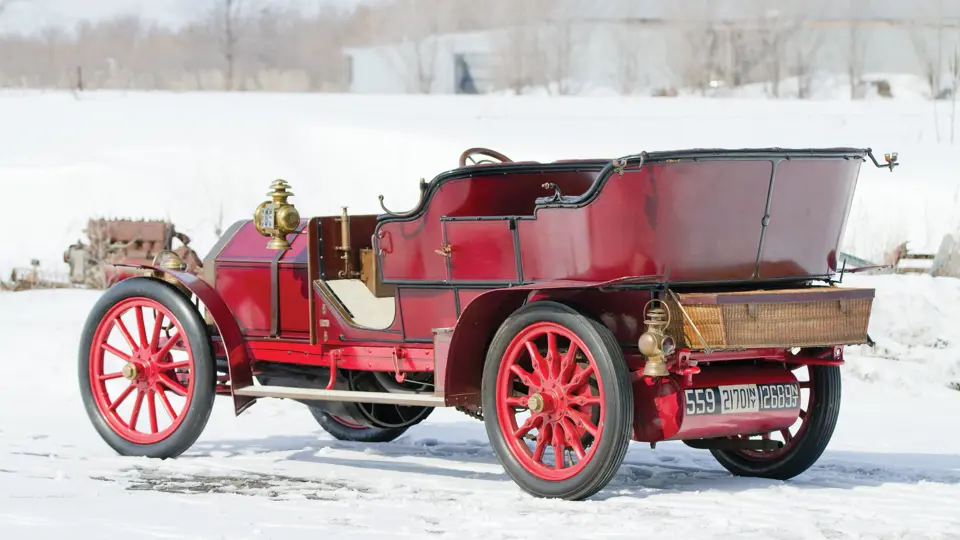

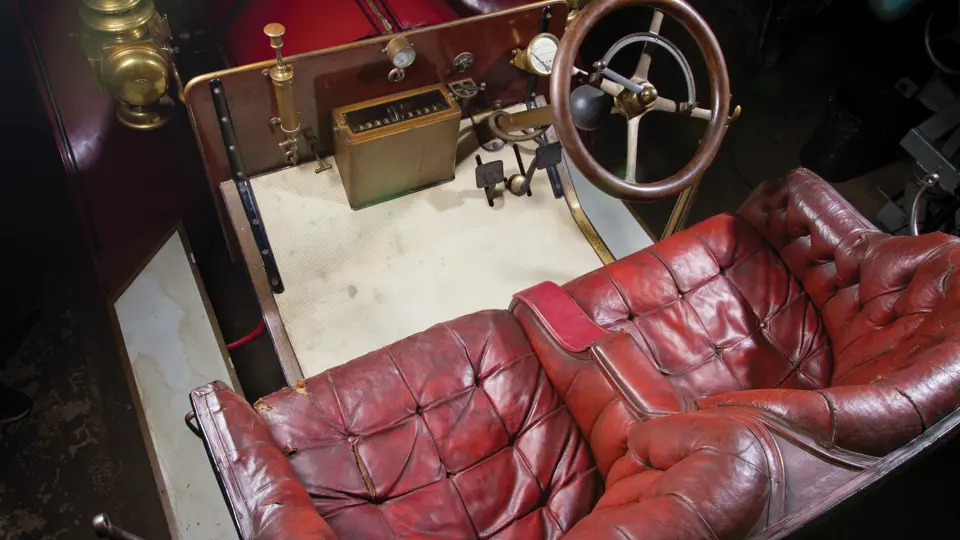

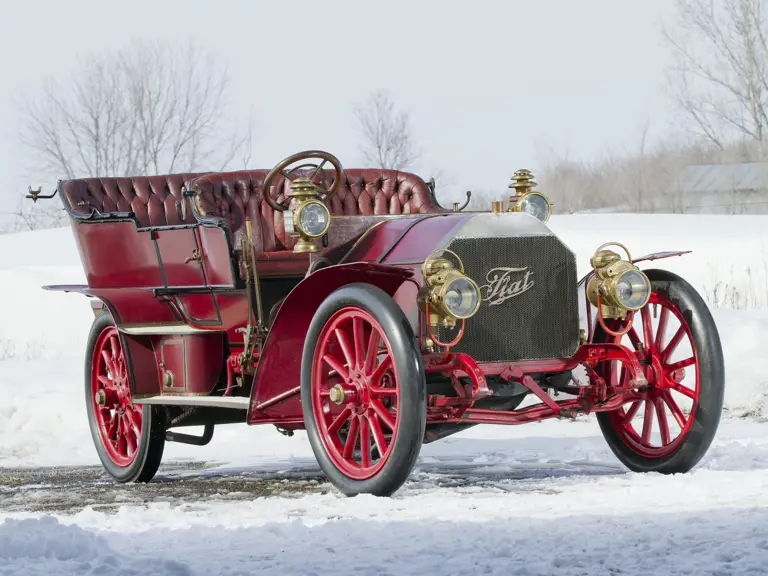
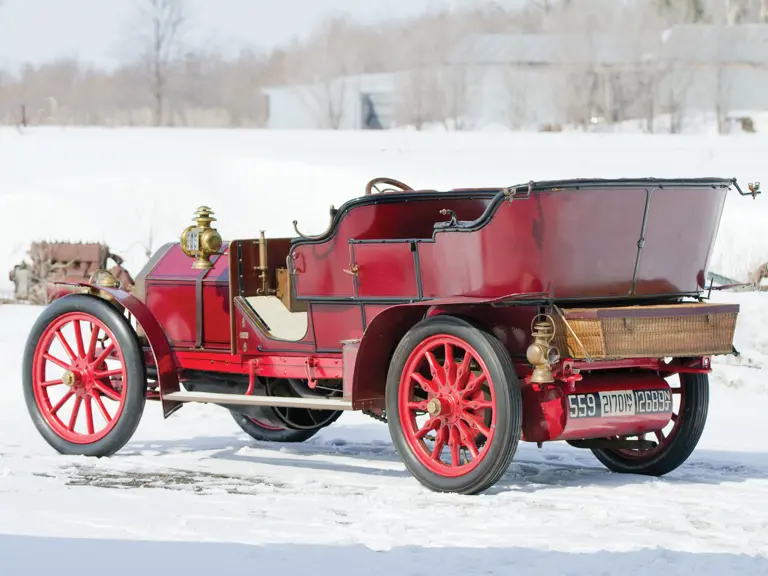
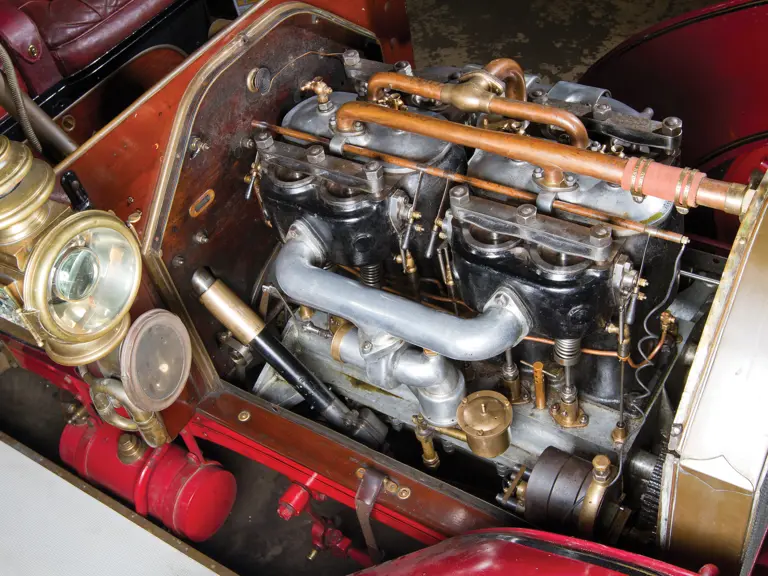
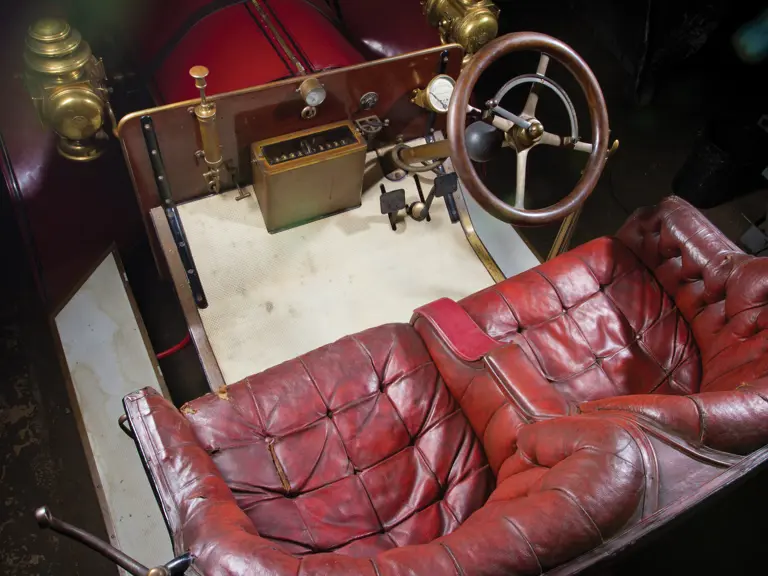
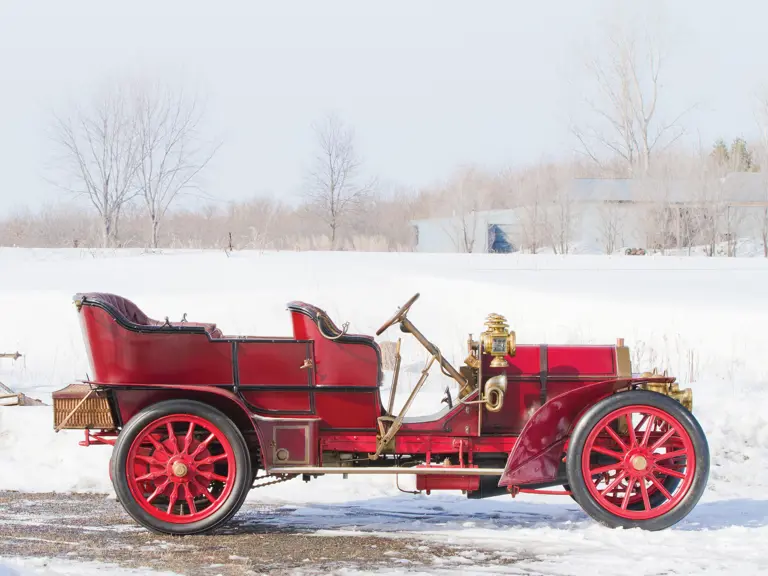

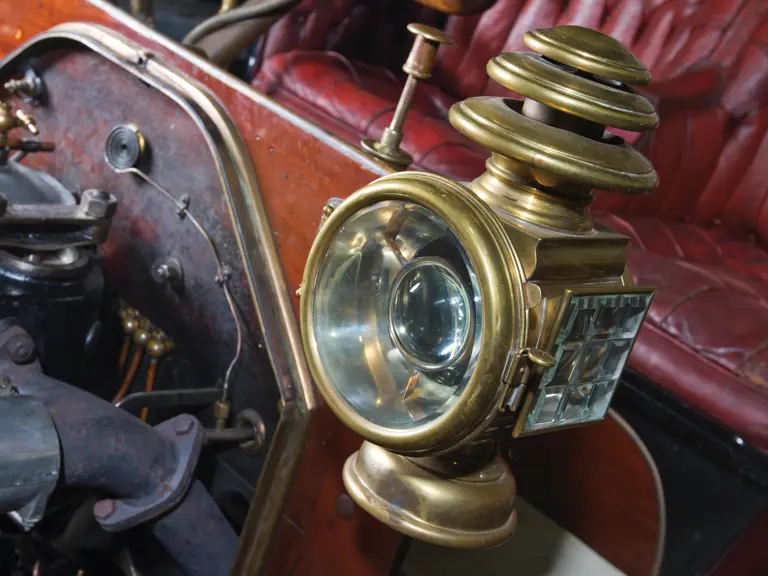
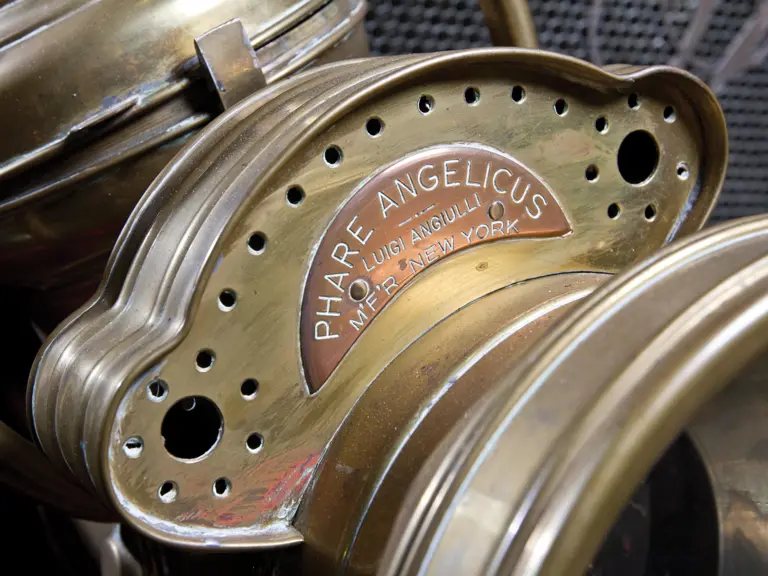
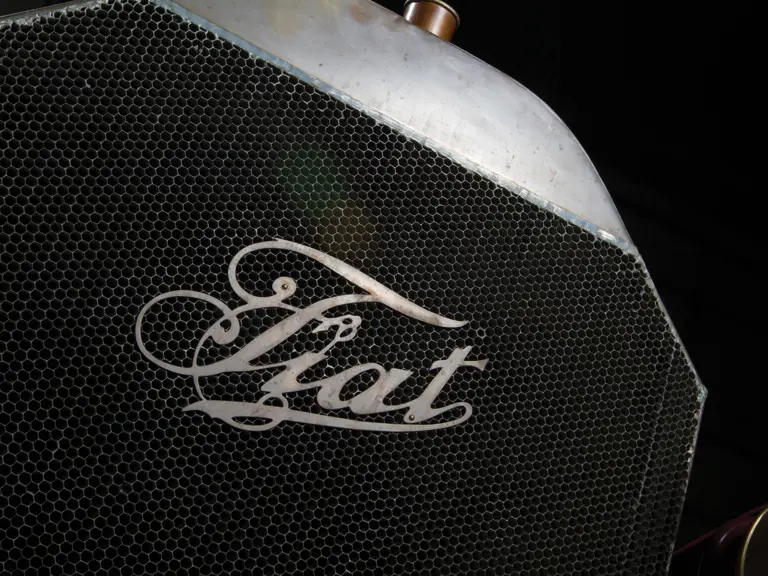
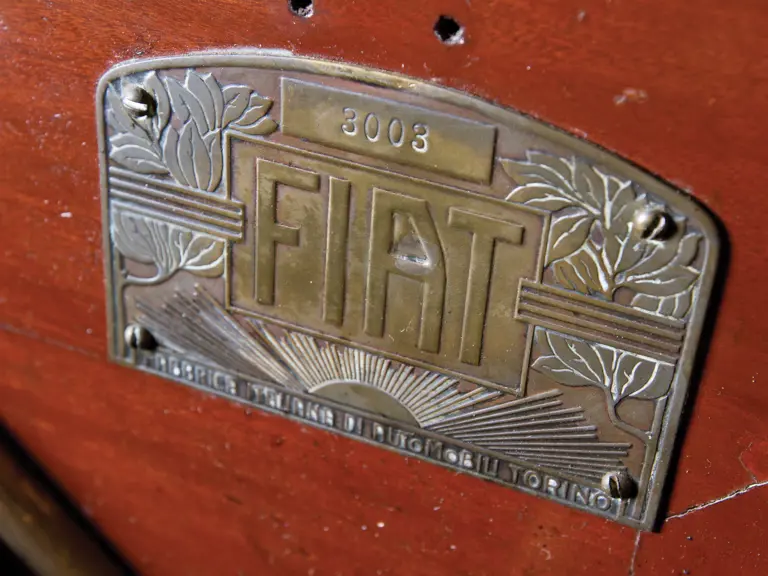
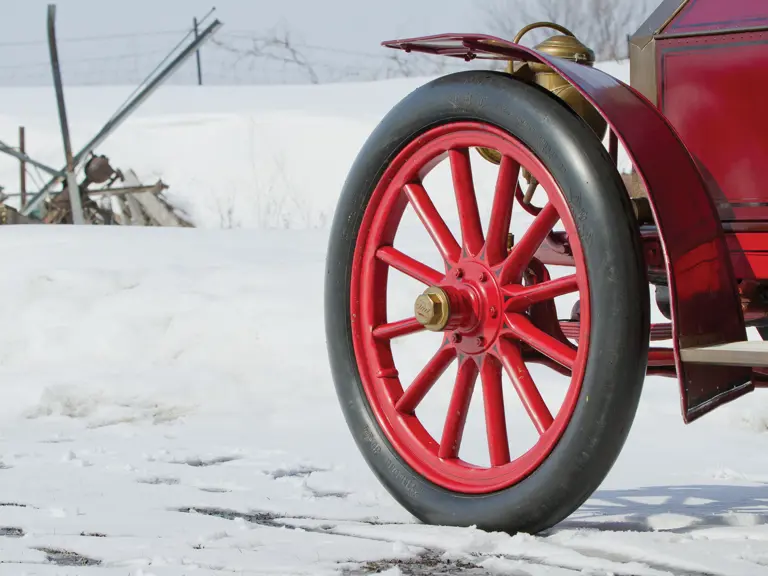
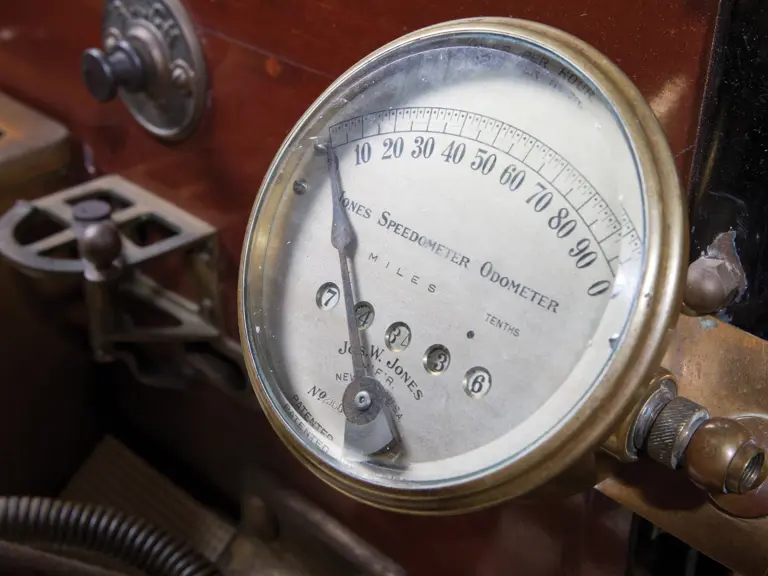
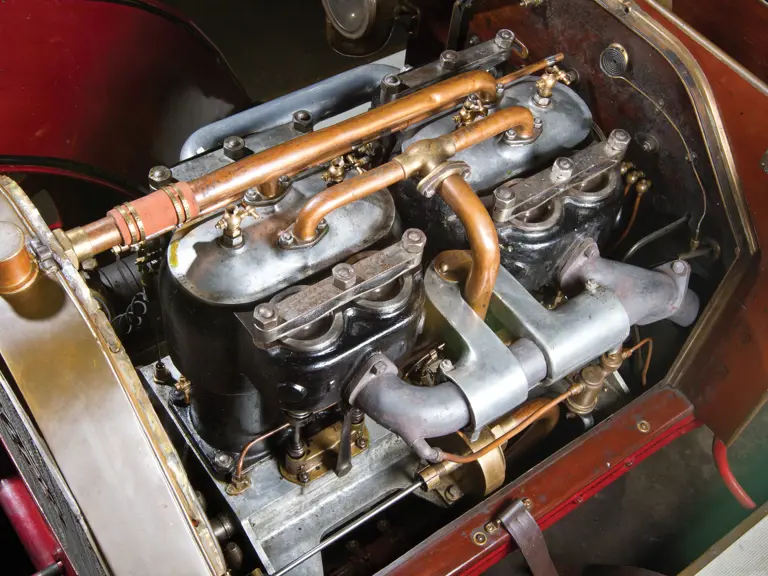
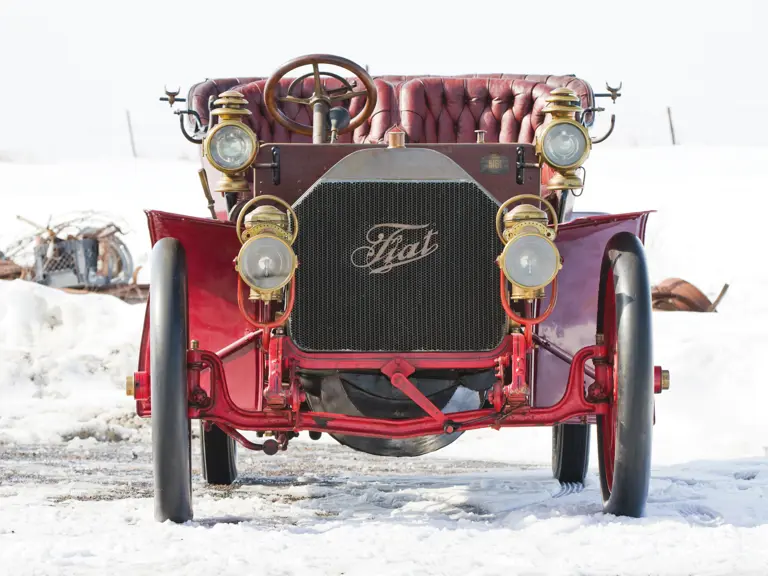
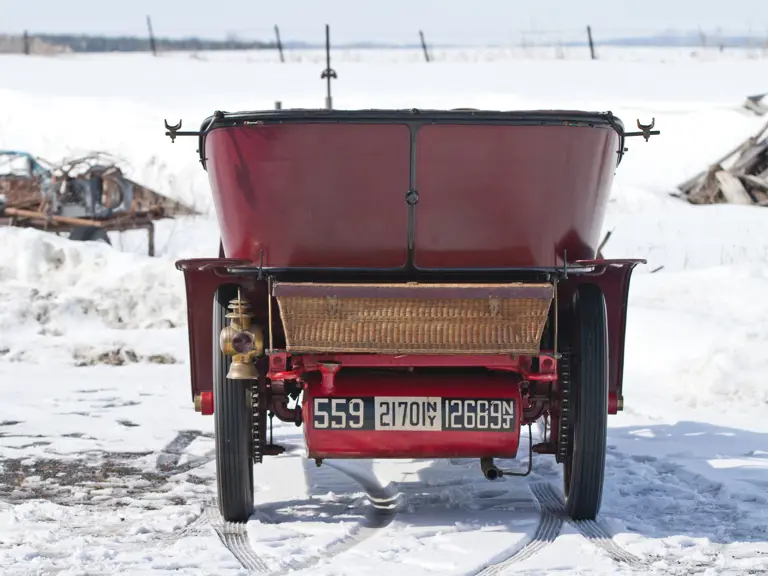
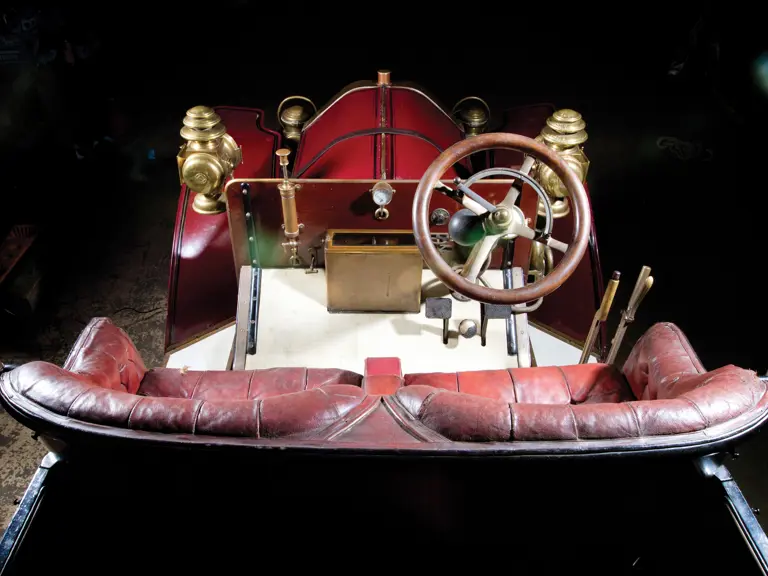
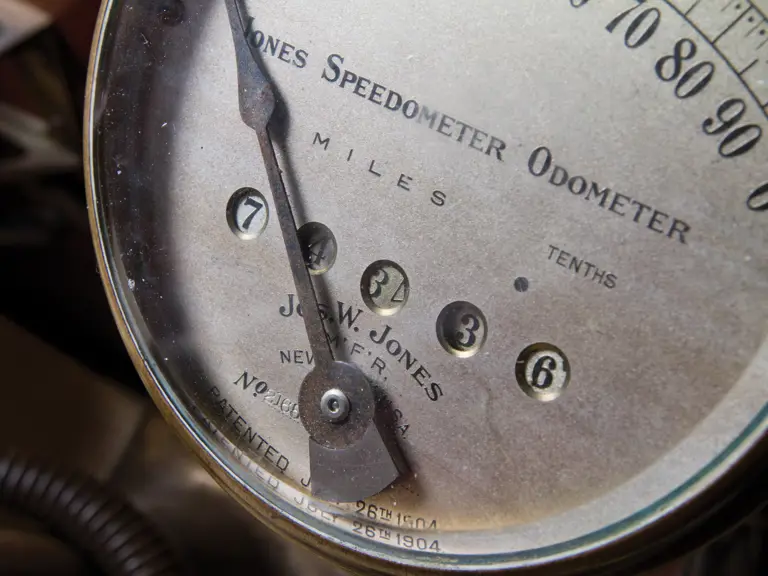
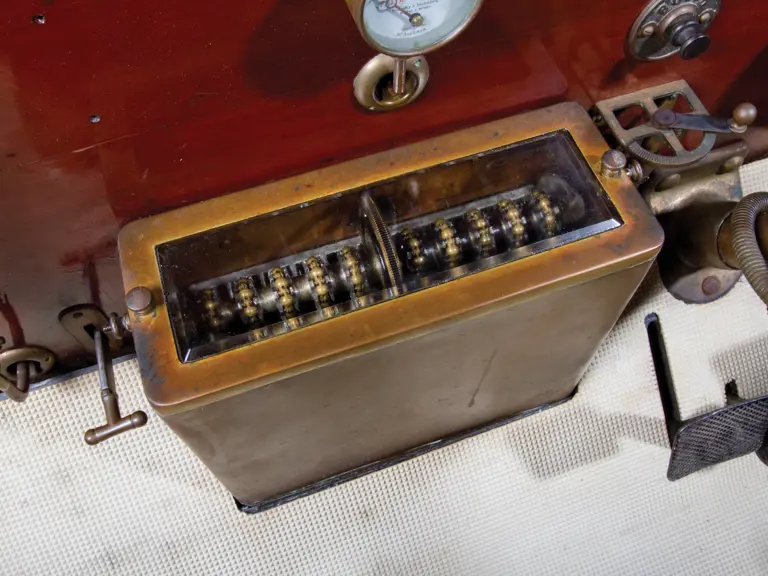
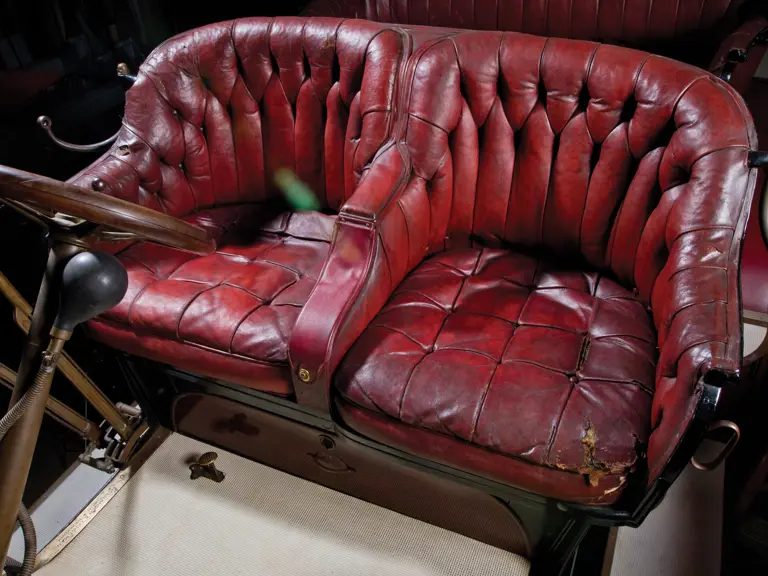

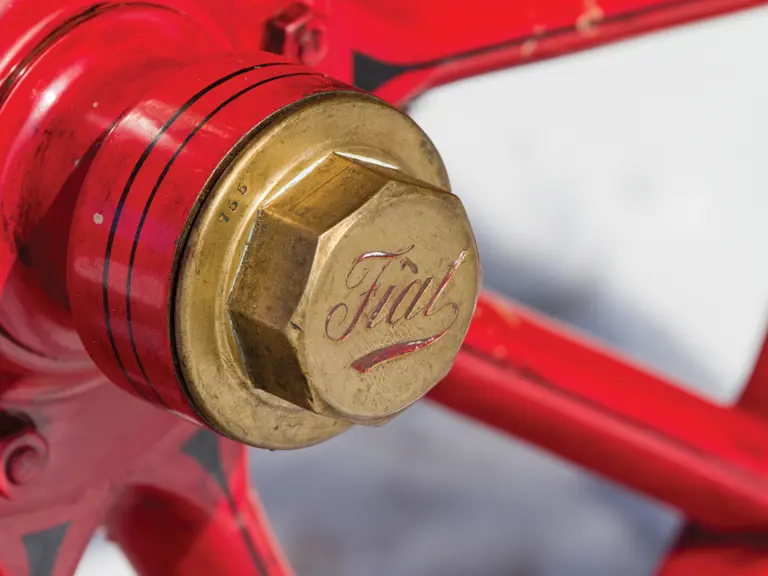
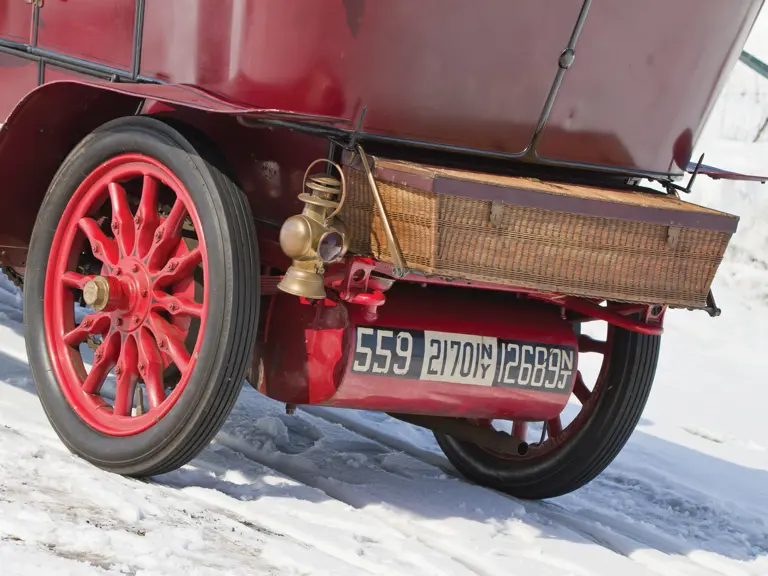
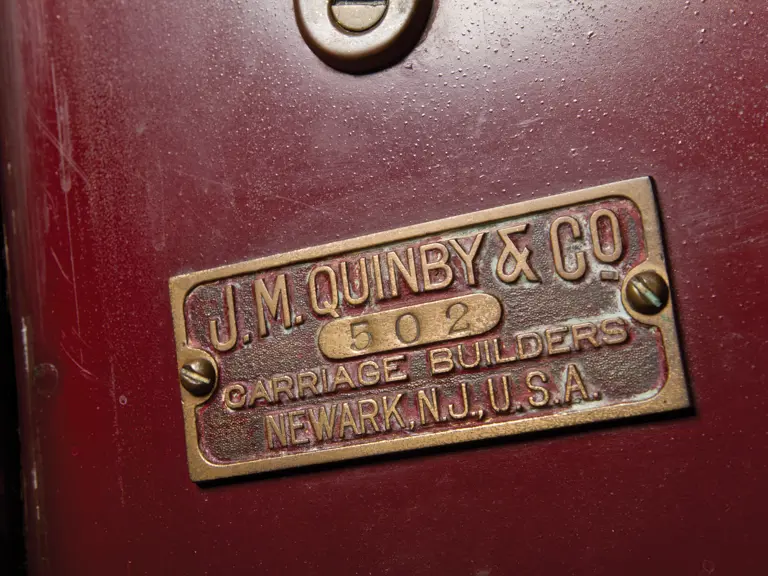
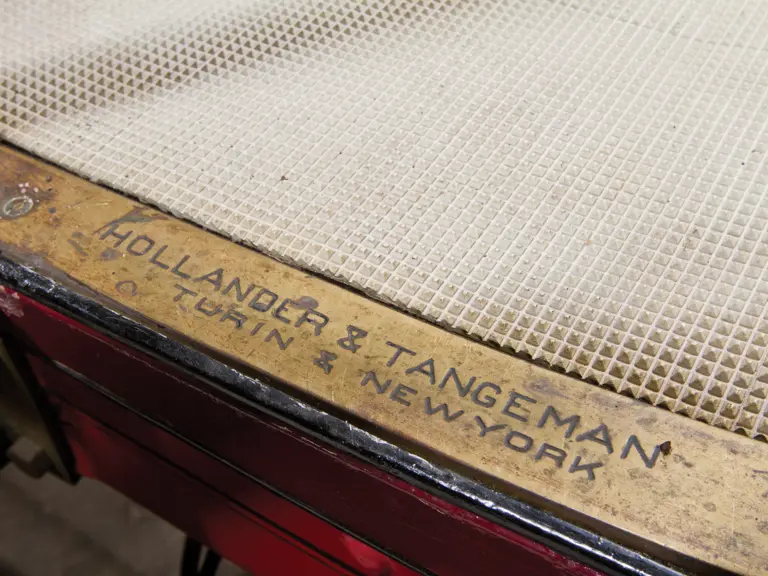
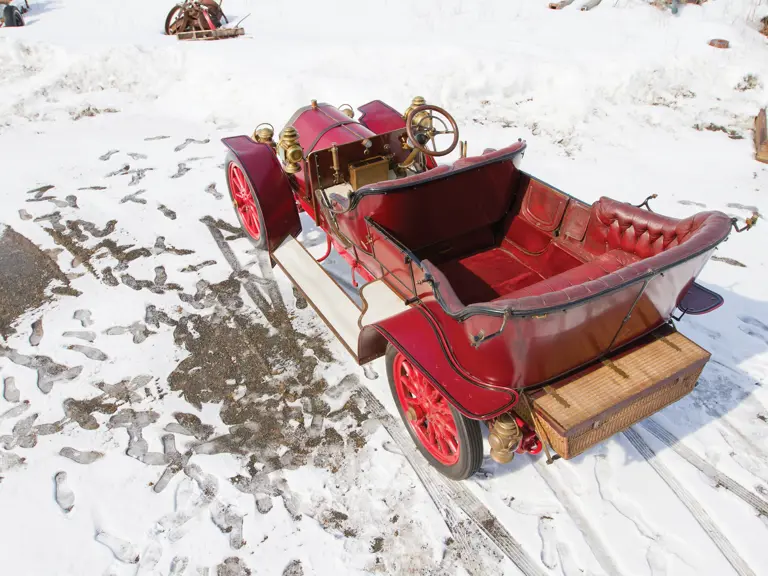
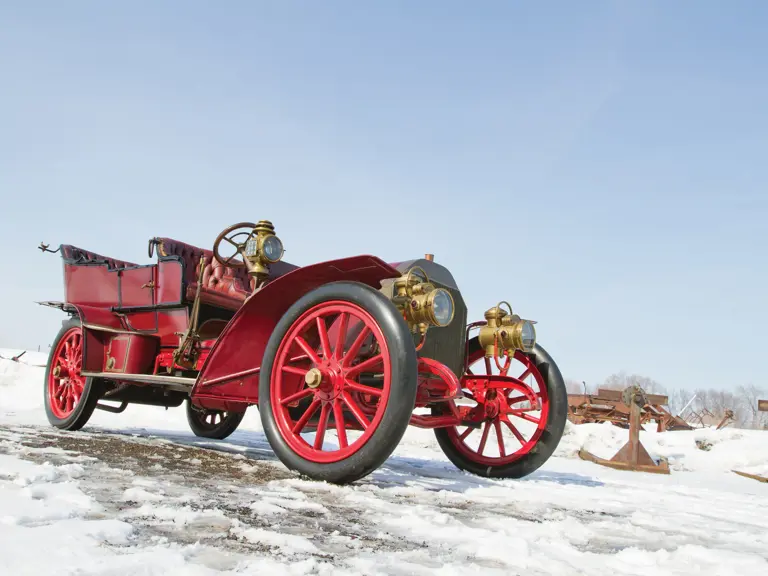
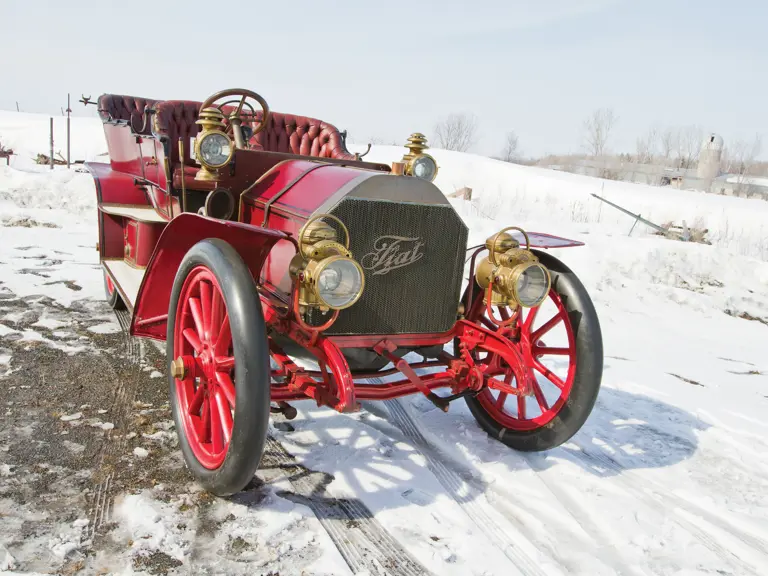
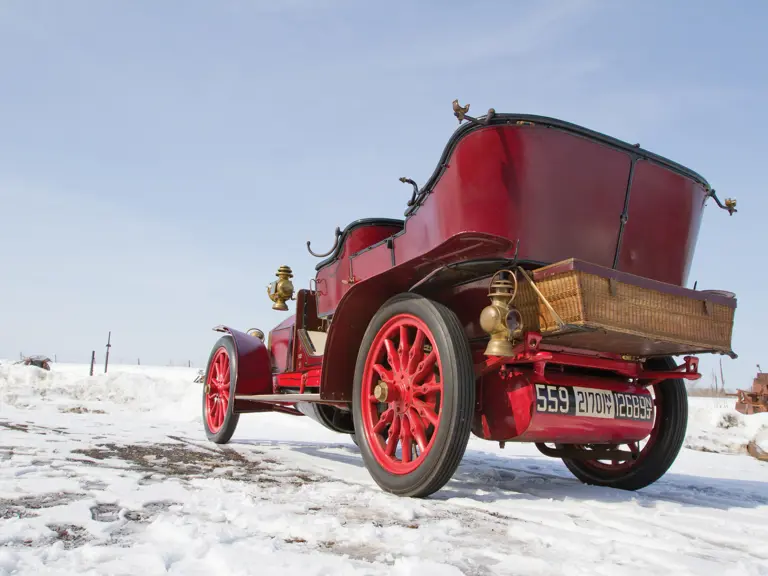
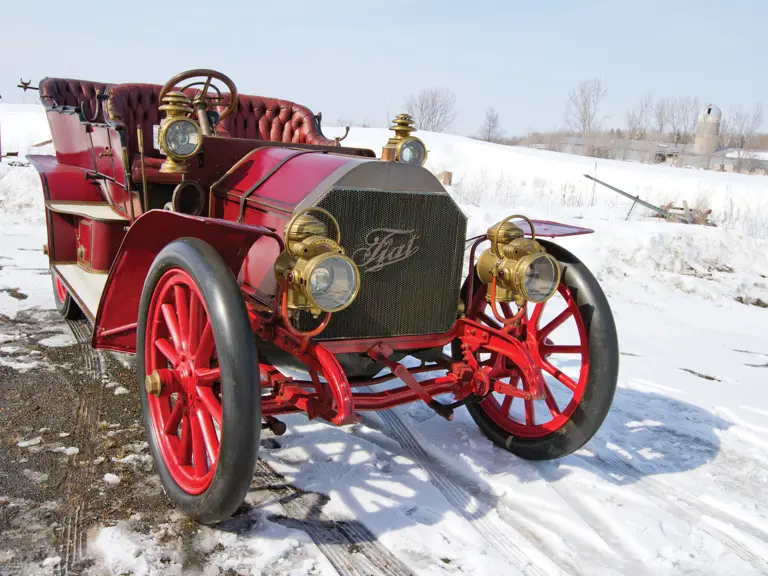
 | Cernobbio, Italy
| Cernobbio, Italy
